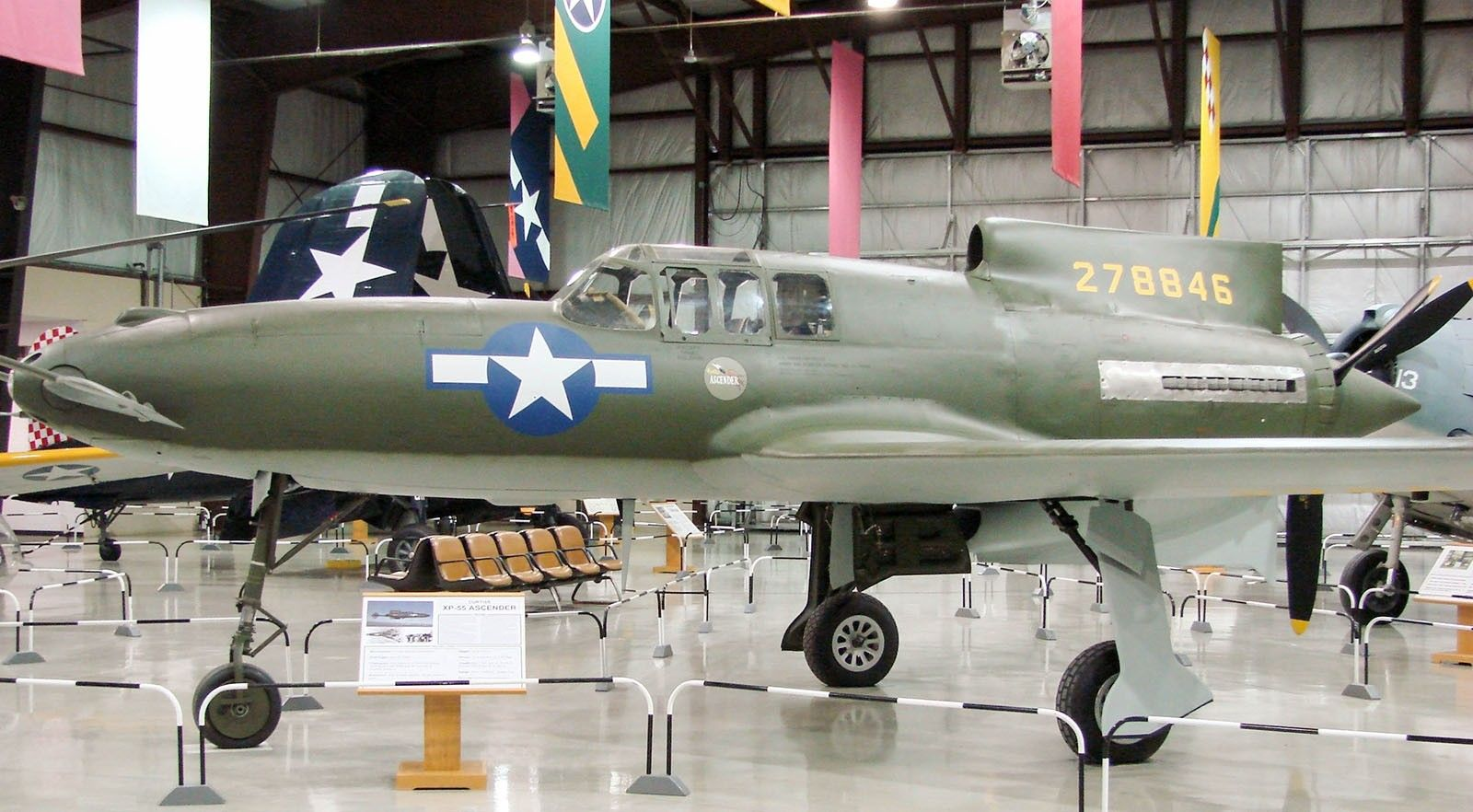
Military aviation has traditionally been the proving ground for extreme innovation. The desire for air supremacy has inspired engineers to create some radical, truly weird airplanes—jets so outlandish they might be mistaken for special effects from a science fiction film. From pancakes to man-in-a-missile, these are five of the most bizarre fighter aircraft ever flown—and why France’s Nord 1500 Griffon takes the cake for sheer weirdness.

5. Curtiss-Wright XP-55 Ascender – The Backwards Fighter
America’s daring WWII experiment in turning fighter design upside down was the XP-55 Ascender. Unlike conventional fighters, it had a canard (small forward wing) and rear-mounted pusher propeller.

The configuration was intended to enhance maneuverability and pilot vision, but it had a cost: the XP-55 was famous for being incredibly unstable. It never equaled the performance of more traditional fighters of the time. Only three prototypes had been built before the project was canceled, but the plane’s bizarre shape still intrigues aviation enthusiasts today.

4. Vought V-173 Flying Pancake – UFO Meets Warplane
The Vought V-173 is what occurs when engineers think big—enormously big. Built for the U.S. Navy during the 1940s, this test plane had a level, plate-like wing that looked like a flying pancake (the nickname’s origin).

Conceived to create incredible lift and permit short takeoffs, it flew pretty well, though not so quickly. It never engaged in combat, and though its even stranger relative, the XF5U, followed later, the pancake never entered active duty. Nevertheless, it is still one of the most oddly looking planes ever constructed.

3. Northrop XP-79 – The Flying Battering Ram
Most fighters are designed to shoot down the enemy. The XP-79, however, was designed to ram into them. Constructed during WWII, the jet was meant to destroy enemy bombers by actually ramming them. Its magnesium-alloy body was designed to absorb shock, and the pilot flew horizontally in order to be able to better counteract g-forces. Alas, the plane was simply too dangerous to fly.

The prototype crashed and destroyed the pilot on its very first flight, and the program was terminated. It was a failure, but it is one of the most audacious ideas in the history of aviation.

2. Convair F2Y Sea Dart – The Jet That Skimmed the Sea
Imagine a fighter plane that did not require a runway. That was the idea behind the Convair Sea Dart, a seaplane fighter designed in the 1950s. Equipped with retractable hydro-skis, it was intended to fly off water and land on water, preferably at supersonic speeds.

In flight tests, the Sea Dart successfully broke the sound barrier on a dive, being the only seaplane in history to achieve this. But the flight was bumpy, the configuration unsteady, and a deadly crash test during testing cursed the project. Nonetheless, it is an intriguing exercise in outside-the-(airfield)-box thinking.

1. Nord 1500 Griffon – France’s Supersonic Sci-Fi Jet
Number one on our list is the Nord 1500 Griffon, a 1950s French interceptor that resembled something out of a futuristic comic book. It was among the first jets to have a dual-propulsion system: a turbojet to lift off, and a high-powered ramjet for scorching speeds above Mach 2.

Griffon was not only wild-looking—it flew wild, as well. The initial prototype first broke the sound barrier in 1955. The second, with its ramjet fully powered, achieved Mach 2 in 1958, the first French aircraft to do so. By 1959, it had set a world speed record over a closed course 100 km long, and subsequently reached 2,330 km/h (Mach 2.19).

But revolutionary technology has its growing pains. The ramjet functioned only at high speed, the airframe overheated in flight, and newer fighters such as the Mirage III were less expensive and more practical. Two Griffons were constructed before the program was canceled.

One of them now resides in France’s Air and Space Museum as a testament to a day when engineers didn’t hesitate to dream big—and strange.

Why These Bizarre Jets Matter
They may not have fought in combat or rolled off production lines in hundreds, but they weren’t failures. They were risky forays into the unknown, experiments that pushed new aerodynamic, propulsion, and design concepts.

The Nord Griffon itself is a testament to that uncompromising innovativeness. Although a brief success, it paved the way for subsequent ramjet use in missiles and supersonic flight. Its strange canard-delta shape and first-to-fly engine configuration have had an impact that transcends its Mach 2 credentials.

So the next time you glance at a streamlined new fighter or advanced drone, recall: the path to the future was paved by some of the strangest aircraft ever to take to the skies.
